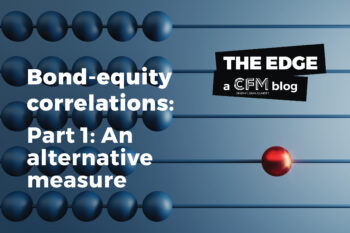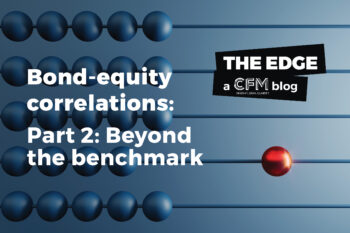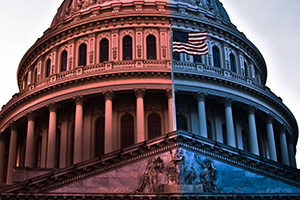With the US presidential election days away, we investigate empirically what is anecdotally assumed: news in the US is biased. The impact of this bias on public perception is consequential. News bias may exert undue influence on the political process by focusing on scandals, gaffes, and policy positions of one candidate over another, and sway undecideds on policies they deem most important.
Our proxy for determining bias is the sentiment towards political entities from five groups of news sources ranked on the Left-to-Right political spectrum1 . Here, in the first part of a series, we explore the overall sentiment of news group towards politicians – specifically the 2024 US Presidential candidates – before extending to explore thematic sentiment. We choose five themes: abortion; immigration; crime; economy; and climate2 .
This analysis focuses on the current political cycle, i.e., 2020 to present.
Politicians: Overall
We extract sentiment (from +1, most positive, to -1, most negative) for Donald Trump, Joe Biden, and Kamala Harris from each of the news groups3 . To identify bias or sentiment tilts from the news groups, we first determine a sentiment benchmark. This benchmark is the average sentiment for the candidates across all news groups. Removing this benchmark from the sentiment for each news group gives us a ‘debased’ sentiment, or, simply, the sentiment deviation of a news group relative to the benchmark. To determine the evolution of any bias, we calculate the spread between candidates. Lack of any bias would result in a spread of ~0. Our calculation convention for the spread is Trump minus Biden/Harris, which is to be interpreted as everything below the zero line as being more positive towards Biden/Harris, and anything above zero as positive towards Trump – see figure 1 below. This convention is an arbitrary choice, the inverse would yield the exact, but opposite sign and interpretation.
We observe a pattern that supports conventional beliefs about US media: the level of sentiment from news sources considered Left tend to be more positive towards Democratic candidates, while those from the Right exhibit more positivity for Republicans. The telling observation is that i.) overall bias on the Left and Right extremes have indeed increased over this presidential cycle, and ii.) bias on the Right has increased more towards Trump than bias on the Left has increased towards Biden/Harris. The spread between the candidates from Skew Left and Center has also increased, and in favor of Biden/Harris, albeit less so than from the other news groups. This would imply that Skew Left and Center sources are, on average, more balanced than other news groups towards the candidates.
Politicians: Themes
To identify bias or sentiment tilts from the news groups vis-a-vis our five chosen themes (abortion, immigration, crime, economy, and climate), we debase the themes’ sentiment for the candidates using the same method as above. Here we remove the average sentiment for each theme across all the news groups, from each of the news groups individually. This yields a debased theme sentiment, which shows the deviation of a news group relative to a particular theme. We again calculate the spread between the candidates, remaining consistent with the convention above (arbitrarily choosing <0 as positive towards Biden/Harris and >0 as positive towards Trump). We present these thematic sentiment spreads in figure 2.
When investigating the sentiment per theme we again find – albeit not universally across all themes – a pattern that holds with conventional beliefs of Left news sources tend to be more positive towards Democratic candidates, and Right towards Republicans. Yet, the Right-to-Left ordering is not present across all themes, and a few idiosyncratic features appear.
The Center has remained mostly consistent, albeit with a growing bias on the economy and climate in favor of Biden/Harris.
The Right and Skew Right tend to cluster together more than the Left and Skew Left. While the Left is systematically (and increasingly) more positive towards Biden/Harris, the Skew Left is more positive towards Trump on abortion and climate change. While the sentiment from the Skew Left on both themes for both candidates is slightly positive, it is only marginally more so for Trump. One could posit that the Right and Skew Right harbor similar bias on core societal themes, while the bias of the Left (mostly typical in favor of Biden/Harris), is not equally present in the Skew Left. The Skew Left – the likes of CNN and The New York Times – does not seem to be as extreme in its bias towards the Democratic candidates as one might anecdotally have expected. Our working theory is that despite an overall bias irrespective of theme, various news sources have their own thematic hobby horses, where they are likely to be more forceful in their praise or critique on certain topics. Crime and the economy for the Right; crime and abortion for the Left.
The biggest bias increase has been on crime. The Right and Left have, near symmetrically, become more positive towards Trump and Biden/Harris, respectively. Following a similar pattern, albeit of a lower magnitude, is the economy. Here we also observe a clustering of the Left, Skew Left and Center as well as the Right and Skew Right on the economy. For immigration, this clustering is also visible.
Our analysis supports a perception that political news in the US is and has become increasingly biased towards politicians. Once we condition on themes, the bias is most noticeable in the extremes but does feature some idiosyncratic dynamics.
In the second part of this series, we conduct a similar analysis, but apply it to US political parties and over a longer look back period.
Key take-aways
1. Overall news bias has grown over this presidential cycle, especially at the bookends of the political spectrum. Digging under the hood of the extremes, the rise in bias of the Left and Right is on account of the Left being less positive towards Biden/Harris than the Right is towards Trump, while both the Left and Right are equally negative towards Trump and Biden/Harris, respectively.
2. Inspecting thematic sentiment, we observe the biggest gap in news bias towards themes of crime and the economy.
3. The Right and Skew Right is consistently more favorable towards Trump on all themes, whereas the same cannot be said for the Left and Skew Left. While the Right and Skew Right seem to sing from the same songbook, the Left and Skew Left cluster less, with only the Left systematically more positive towards Biden/Harris.
1 For the groupings we rely on rankings published by media watchdogs in the US. We choose those news sources that have a high degree of communal agreement across the watchdogs; limit to those that are considered ‘mainstream’ or has wide-enough readership; and are deemed to have a high level of reliability. We also limit the choice of news outlet that are US-based.
2 These themes are consistently ranked as the major concerns for US voters in polls. See for example: https://www.pewresearch.org/politics/2024/09/09/issues-and-the-2024-election/ .
3 The sentiment of Joe Biden up until the day he announced the end of his reelection bid (21 July 2024), and the sentiment of Kamala Harris thereafter. The sentiment of Donald Trump over the entire sample.
DISCLAIMER
Any statements regarding market events, future events or other similar statements constitute only subjective views, are based upon expectations or beliefs, involve inherent risks and uncertainties and should therefore not be relied on. Future evidence and actual results could differ materially from those set forth, contemplated by or underlying these statements. In light of these risks and uncertainties, there can be no assurance that these statements are or will prove to be accurate or complete in any way. All opinions and estimates included in this document constitute judgments of CFM as at the date of this document and are subject to change without notice. CFM accepts no liability for any inaccurate, incomplete or omitted information of any kind or any losses caused by using this information. CFM does not give any representation or warranty as to the reliability or accuracy of the information contained in this document. The information provided in this document is general information only and does not constitute investment or other advice. The content of this document does not constitute an offer or solicitation to subscribe for any security or interest.






